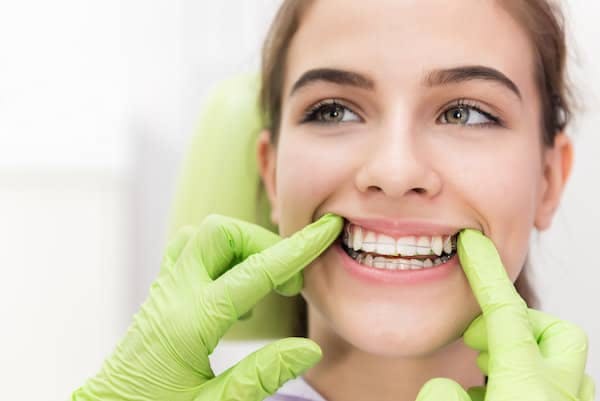
What is Two-Phase orthodontic treatment?
Two-phase orthodontics is a type of orthodontic treatment that involves one course of treatment in childhood and another during adolescence. The first course of treatment is performed when the patient has a combination of baby and adult teeth.
For most patients, this is between the ages of 7 to 11 years old. A second and more extensive treatment is then done around 12 to 13 years, or when all adult teeth have erupted.
What are the benefits of Two-Phase treatment?
Many patients benefit from this approach of two separate treatment phases. Early treatment can potentially prevent more serious dental conditions when the patient is older, hence eliminating the need for a more complex treatment. For instance, our orthodontists can create space for a tooth that might otherwise become blocked out and require extraction at a later age. Lacking lower jaw growth can also be addressed and aided to full expression, preventing the need for surgery in the future.
Why Hometown Orthodontics
Free Consultation (Including Photos and X-rays)
Direct Billing to Insurance
Affordable Interest-Free Payment Plans
No Referrals Needed
4 Convenient Locations
Phase One
A Foundation for a lifetime of beautiful smiles
Helping your child’s jaws develop in a way that will accommodate all of the permanent teeth and improve the way the upper and lower jaws fit together, is the goal of Phase-One treatment. Children often exhibit early signs of jaw problems as they grow and develop. An upper jaw that is growing too much or is too narrow can be recognized at an early age by a certified orthodontist. If children over the age of six are found to have this jaw discrepancy, they are candidates for early orthodontic treatment. Also, if children around the age of eight have crowded front teeth, early treatment can prevent the need to extract permanent teeth later.
Planning now can save your child’s smile later
Being able to prevent the removal of permanent teeth later in life, or the need for surgical procedures to realign the jaws are some enormous benefits of early-phase treatment in children.
Making records to determine your child’s unique treatment
Orthodontic records include models of the teeth, X-rays, and photographs and are essential to determine the type of appliances to be used, the duration of treatment time, and the frequency of visits. During your child’s initial consultation, our orthodontic team will gather some of these records to determine if early treatment is necessary.
Resting Period
During this time between phases, the remaining permanent teeth are left alone as they erupt. Retainers may be prescribed and designed to not interfere with eruption, allowing the existing permanent teeth some freedom of movement. A successful first phase will have created room for permanent teeth to find an eruption path. Otherwise, they may become impacted or severely displaced.
Monitoring the teeth’s progress
Periodic observation appointments are necessary, usually on a six-month basis. At the end of the first phase of treatment, teeth may not be in their final positions. This will be determined and accomplished in the second phase of treatment. Selective removal of certain primary (baby) teeth may be in the best interest of enhancing eruption during this resting phase.
Phase Two
Stay healthy and look attractive
Equilibrium is established with the teeth functioning together in complete harmony with the lips, cheeks, tongue and other teeth. This is the goal of Phase-Two orthodontic treatment and usually involves full upper and lower braces or Invisalign.
At the beginning of Phase-One treatment, orthodontic records are secured and a diagnosis and treatment plan is established. Certain types of appliances are used in the first phase to correct and realign the teeth and jaws. Phase-Two begins when all permanent teeth have erupted, and usually requires braces or Invisalign on all the teeth for an average of 18-24 months. Retainers need to be worn after this phase to ensure your child retains their beautiful smile.